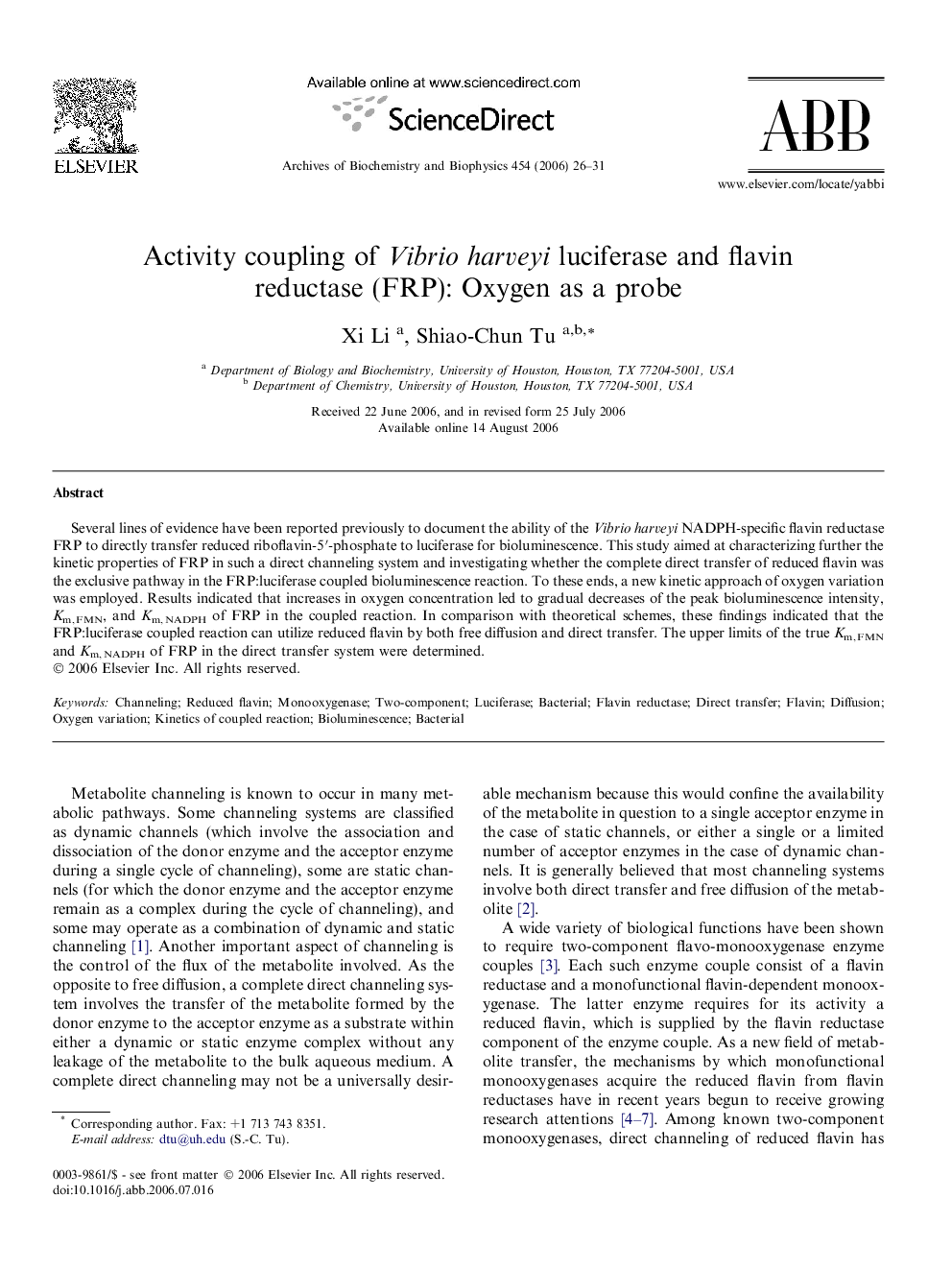| Article ID | Journal | Published Year | Pages | File Type |
|---|---|---|---|---|
| 1927256 | Archives of Biochemistry and Biophysics | 2006 | 6 Pages |
Several lines of evidence have been reported previously to document the ability of the Vibrio harveyi NADPH-specific flavin reductase FRP to directly transfer reduced riboflavin-5′-phosphate to luciferase for bioluminescence. This study aimed at characterizing further the kinetic properties of FRP in such a direct channeling system and investigating whether the complete direct transfer of reduced flavin was the exclusive pathway in the FRP:luciferase coupled bioluminescence reaction. To these ends, a new kinetic approach of oxygen variation was employed. Results indicated that increases in oxygen concentration led to gradual decreases of the peak bioluminescence intensity, Km, FMN, and Km, NADPH of FRP in the coupled reaction. In comparison with theoretical schemes, these findings indicated that the FRP:luciferase coupled reaction can utilize reduced flavin by both free diffusion and direct transfer. The upper limits of the true Km, FMN and Km, NADPH of FRP in the direct transfer system were determined.
